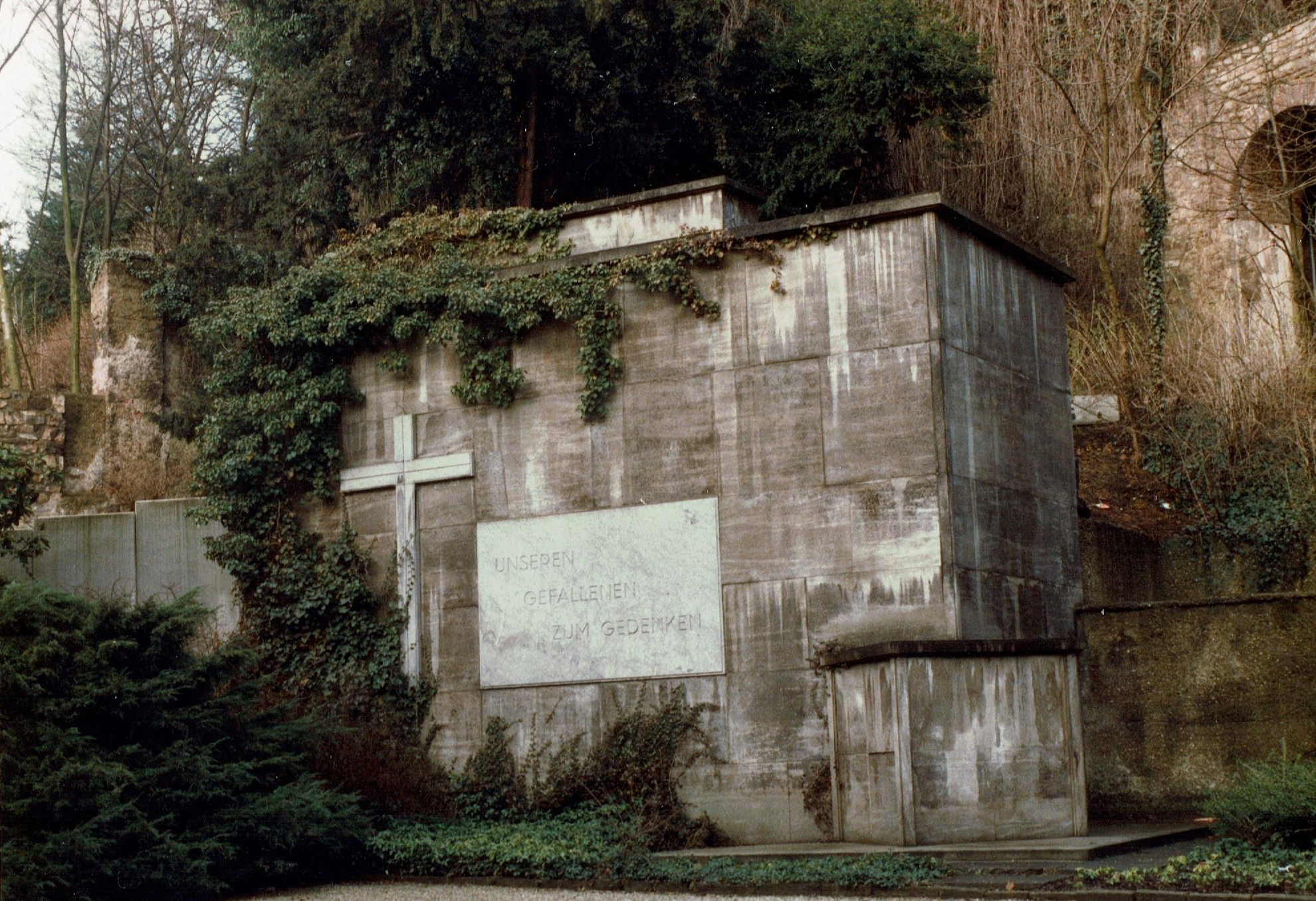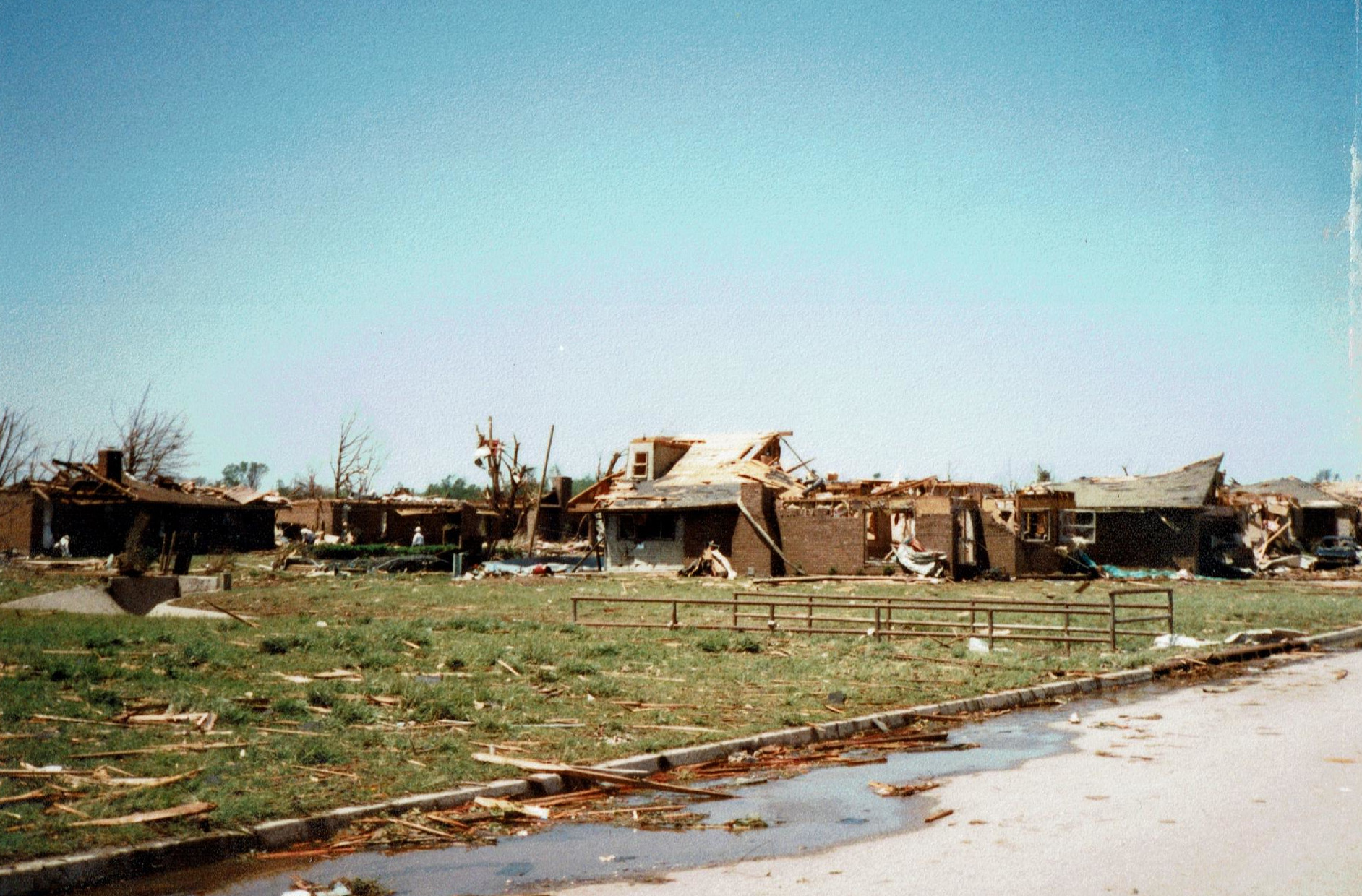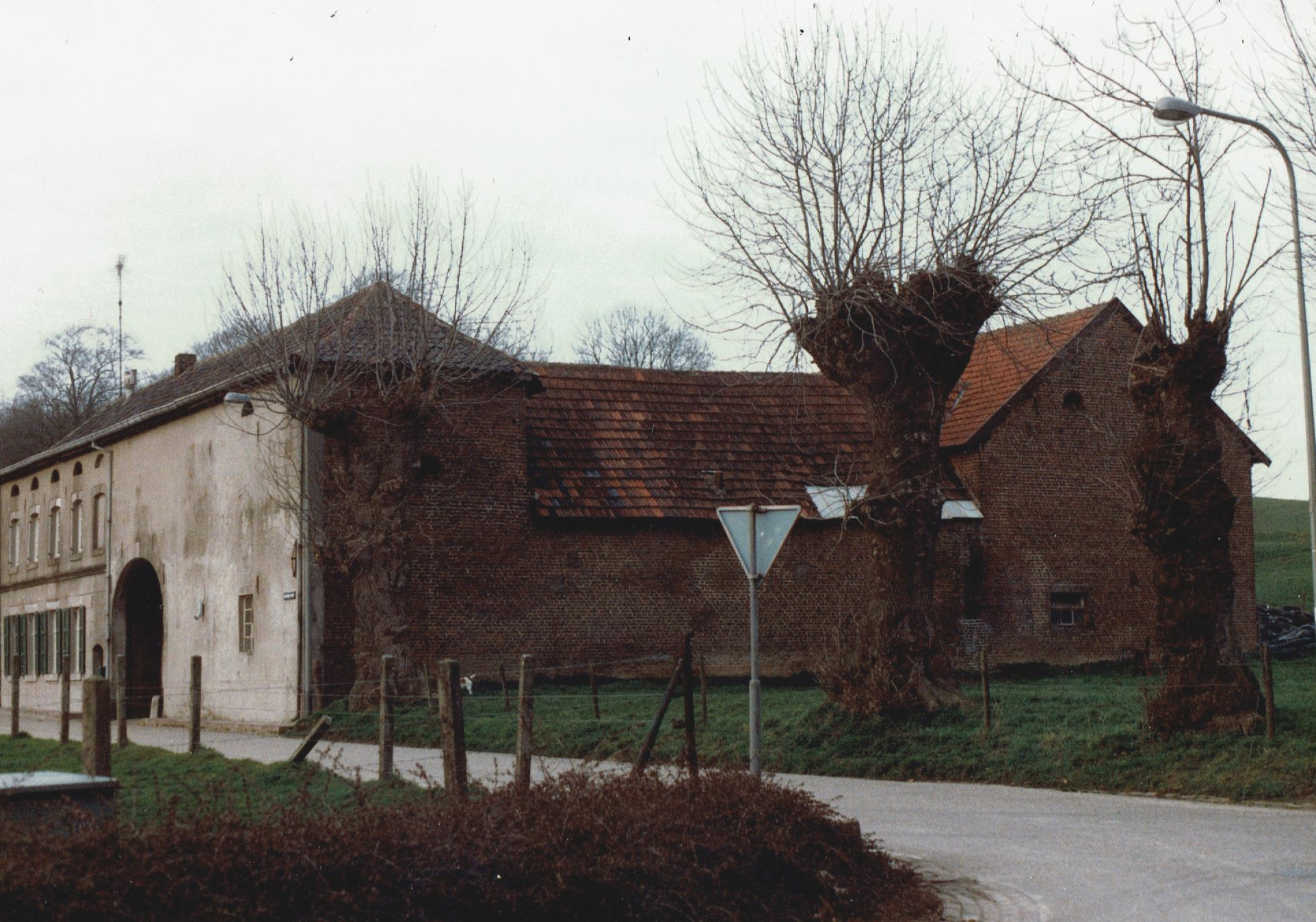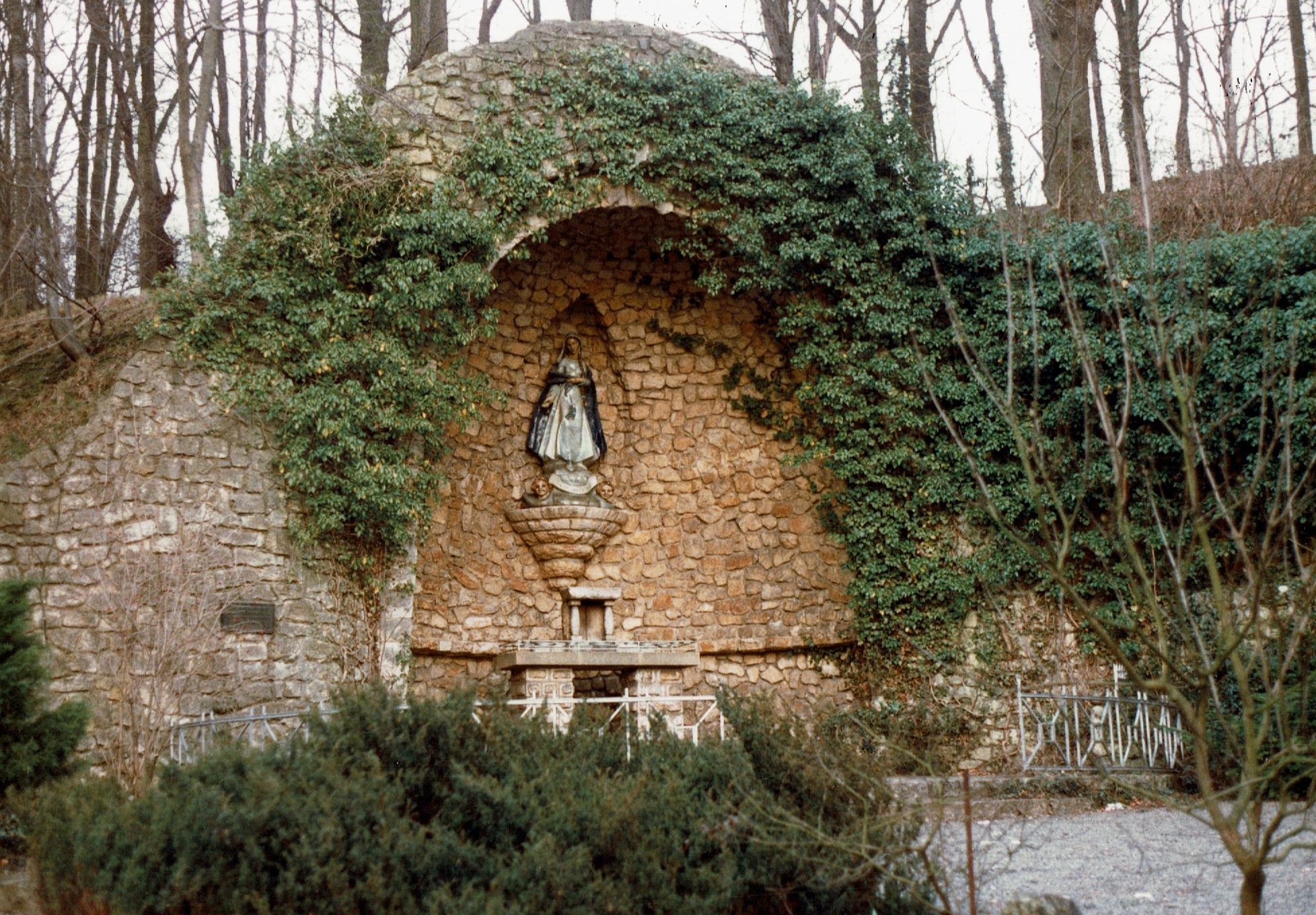 Here are my munchkins cavorting on remnants of the Siegfried Line in the Wurm Valley near Herzogenrath, Germany. The daughter is trying to get the dog to sit down and look at me, but that was pointless. The dog was an excellent hiking partner, seldom tiring on even the longest walks. But she never could sit still for much of anything.
Here are my munchkins cavorting on remnants of the Siegfried Line in the Wurm Valley near Herzogenrath, Germany. The daughter is trying to get the dog to sit down and look at me, but that was pointless. The dog was an excellent hiking partner, seldom tiring on even the longest walks. But she never could sit still for much of anything.
 It’s only fair that the Germans would have their own WW2 memorials. This one was quite large and I couldn’t get it all in the camera view once I stepped up close to it, but farther back it was hard to see around the foliage. This one stands in the Wurm Valley near Herzogenrath, Germany.
It’s only fair that the Germans would have their own WW2 memorials. This one was quite large and I couldn’t get it all in the camera view once I stepped up close to it, but farther back it was hard to see around the foliage. This one stands in the Wurm Valley near Herzogenrath, Germany.
 This is one of the few surviving photos I took the day after the big tornado on May 3, 1999. This picture was taken just a quarter mile from the trailer house I rented at that time. We were on the Midwest City side, and this neighborhood was on the Del City side of Sooner Road, near SE 44th Street. After dipping down several times starting in Chickasha, the tornado path started in earnest in Moore, and was several miles long. It nipped across the corner of Tinker AFB before it lifted a couple of miles north. While we sat in the shelter, it shook the ground and the sound reminded me of standing in the blast from very large jet engines.
This is one of the few surviving photos I took the day after the big tornado on May 3, 1999. This picture was taken just a quarter mile from the trailer house I rented at that time. We were on the Midwest City side, and this neighborhood was on the Del City side of Sooner Road, near SE 44th Street. After dipping down several times starting in Chickasha, the tornado path started in earnest in Moore, and was several miles long. It nipped across the corner of Tinker AFB before it lifted a couple of miles north. While we sat in the shelter, it shook the ground and the sound reminded me of standing in the blast from very large jet engines.
 I always loved looking that this old farmhouse that stood on the northern edge of Oirsbeek, Netherlands. It was on the path I often took for jogging, leaving my house in the same village and heading north into some hills.
I always loved looking that this old farmhouse that stood on the northern edge of Oirsbeek, Netherlands. It was on the path I often took for jogging, leaving my house in the same village and heading north into some hills.
 My memory is fuzzy, but I seem to recall this chapel was on the same road. However, I do know it stands within a few hundred meters of the farmhouse, wherever it was. There was at least a couple of annual community services held here and it was quite a lovely plaza hidden in the trees on a hillside.
My memory is fuzzy, but I seem to recall this chapel was on the same road. However, I do know it stands within a few hundred meters of the farmhouse, wherever it was. There was at least a couple of annual community services held here and it was quite a lovely plaza hidden in the trees on a hillside.


The white streaks on the memorial are curious. They are probably mineral washes (I forget the real term) from whatever material the exterior is made out of, from the rain over the years, but it still isn’t something you normally see.
The answer in this case is actually well known: Some of the coloration built up is from coal ash and a damp climate. Quite a few facilities are still heated with coal in that area. The white is residue that gets deposited when the coal ash is washed off periodically, and the residue runs down in the rain because it isn’t rinsed that well.